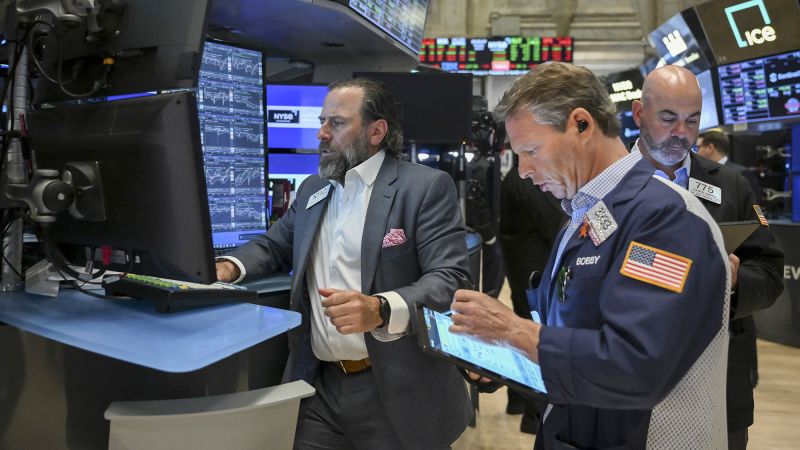On a recent Monday, U.S. stocks experienced a notable uptick, with the S&P 500 index nearing its historic peak as trade negotiations between the United States and China commenced in London. Investors displayed optimism towards the market, reflecting a growing belief that trade tensions could ease, thereby positively impacting market conditions.
As of early afternoon on that Monday, the Dow Jones Industrial Average was up by 32 points, showcasing a modest yet positive trend. The broader S&P 500 index rose by 0.22%, while the tech-centric Nasdaq Composite gained 0.43%. Although stocks remained relatively stable, they showed a slight increase as investors anticipated updates from the ongoing trade discussions between the two economic giants. Notably, the S&P 500 had reached its highest level since February just days prior, being within approximately 2.4% of hitting a new record high.
The market’s upward trajectory was a continuation of recent positive performance, with the Dow, S&P 500, and Nasdaq all enjoying back-to-back weeks of gains. Over the past two months, U.S. stock markets have shown steady recovery, particularly following President Donald Trump’s decision to moderate earlier plans for sweeping tariffs. Earlier in April, the S&P 500 had been teetering on the brink of a bear market, but it rebounded with more than a 20% increase since that low. As Richard Saperstein, Chief Investment Officer at Treasury Partners, remarked, market movements have been largely influenced by the postponement of tariffs and a perception of more moderate economic policies. He noted that ongoing trade negotiations would likely continue to create market volatility as developments unfold.
Wall Street’s recent optimism appears to have originated from constructive dialogues between representatives from Washington and Beijing, further fueled by a recent phone conversation between President Trump and Chinese President Xi Jinping. This ongoing engagement has sparked hopes for a resolution to the trade dispute that has characterized U.S.-China relations in recent months.
Despite the current positive sentiment, the S&P 500’s ascent towards a record high comes on the heels of a tumultuous year rife with significant volatility and uncertainty. In March and early April, the index suffered a notable slump as Trump initially announced plans for extensive tariffs. This resulted in the S&P 500 reaching its lowest point of the year on April 8, marking an 18.9% decrease from its record high of 6,144.15, which had been achieved on February 19. However, as the administration softened its stance on tariffs and paused several impending hikes, the market began to stage a remarkable recovery.
Additionally, robust economic indicators have provided further reassurance to investors regarding the resilience of the economy despite Trump’s tariff strategies. Expectations for new inflation data for the month of May have added to the complexity of market assessments, highlighting the dearth of clear guidance amidst fluctuating policies.
Large Wall Street banks have shown flexibility in their year-end projections for the S&P 500, frequently adjusting targets in response to the unpredictable nature of trade policies and stronger-than-expected economic performance. In May, Goldman Sachs raised its year-end prediction for the S&P 500 to 6,100 after having reduced it earlier in the year. Similarly, UBS revised its target to 6,000, and Deutsche Bank made parallel changes, raising its outlook to 6,550 after initially decreasing it.
Furthermore, analysts, including those at Deutsche Bank, have observed a significant sensitivity of earnings forecasts to policy changes, particularly concerning tariffs, noting a drastic reduction in anticipated tariff-related impacts on earnings moving forward. Sam Stovall, Chief Investment Strategist at CFRA Research, opined that the S&P 500 could technically mark the end of its latest correction—a category defined as a drop of 10% from a recent high—if it eclipses prior record levels.
Historically, it is shown that following a correction, the S&P 500 typically rises by an average of 10% over the subsequent 127 days. Nonetheless, analysts caution that substantial and sustained gains are not guaranteed. JPMorgan Chase expressed a relatively optimistic view, stating that absent any major policy disruptors, the most likely direction for the market is upward, heading towards new heights.
As the situation is fluid, further updates and developments are anticipated as negotiations unfold, influencing market trajectories along the way.



